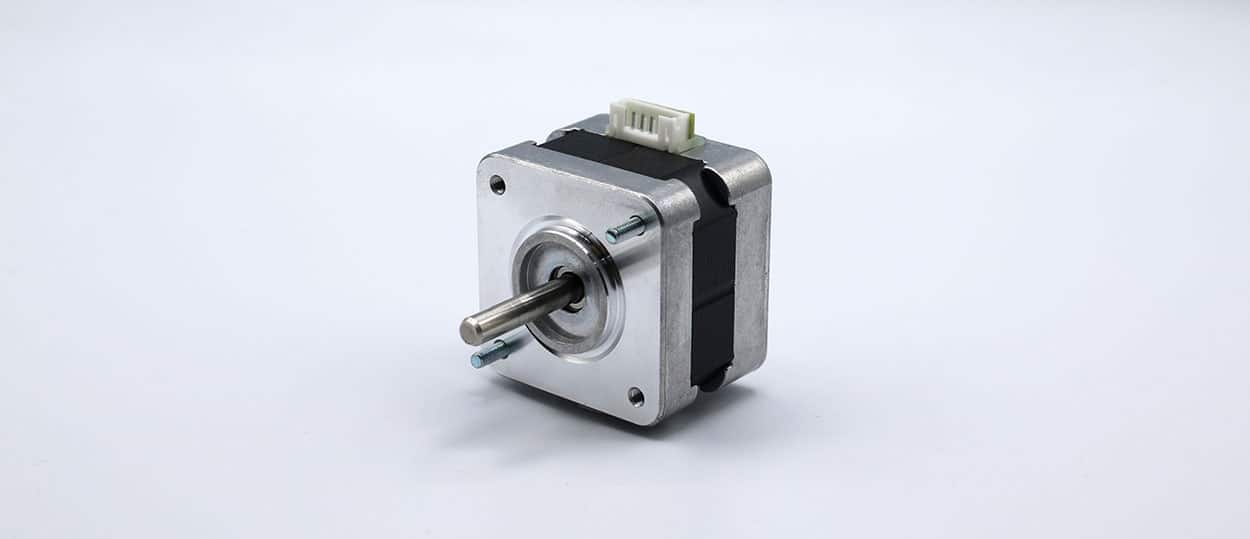In modern technology, where devices are becoming increasingly smaller yet demand more precision, mini-stepping motors have become essential. These motors provide precise control in applications that require high accuracy and smooth motion, despite their compact size. This article delves into how mini-stepping motors, particularly with the use of micro-stepping, enhance both smoothness and accuracy, making them indispensable in industries ranging from medical devices to robotics and consumer electronics.
What Are Mini Stepping Motors?
Mini stepping motors are compact versions of traditional stepper motors, designed for applications where space is limited, but precise control is crucial. Like standard stepper motors, they operate by dividing a full rotation into discrete steps. This unique stepping motion allows for accurate control of position, speed, and direction.
These miniature motors are essential in applications that demand fine movements, such as in medical devices, precision instruments, and miniature robotics. The combination of their compact size and ability to control motion with high accuracy makes mini-stepping motors a key component in many small-scale devices.
How Mini Stepping Motors Work
At their core, mini-stepping motors function similarly to larger stepper motors. They are built with a rotor (which moves) and a stator (which remains stationary), and each step the motor takes is driven by sequential electromagnetic pulses.
Steps and Resolution
Each step the motor takes moves it by a specific angle. The number of steps per revolution determines the motor’s resolution. For instance, a typical stepper motor might have 200 steps per revolution, meaning each step moves the motor by 1.8 degrees. In mini-stepping motors, this precision is especially important when operating in tight spaces where minute adjustments are needed.
In applications like miniature surgical tools or optical instruments, where tiny, accurate movements are essential, this high-resolution control ensures precision even at micro scales.
What Is Microstepping?
Microstepping is a technique used to improve the smoothness and precision of stepping motors, particularly beneficial for mini-stepping motors. Instead of taking full steps, the motor’s drive divides each step into smaller micro steps, allowing for smoother and more gradual motion.
Enhancing Smoothness
When a mini-stepping motor operates in full-step mode, the motion can sometimes feel jerky, especially at lower speeds. By using microstepping, the motor takes more frequent but smaller steps, reducing the noticeable jerkiness. This results in a much smoother operation, which is crucial in applications like precision medical devices, where smooth movements are critical for patient safety.
Improving Accuracy
Microstepping also enhances the accuracy of a motor’s position. By breaking each full step into smaller increments, the motor can position itself more precisely, which is ideal for applications requiring pinpoint accuracy, such as robotic arms, 3D printers, or miniature camera controls.
Applications of Mini Stepping Motors in Precision Devices
The use of mini-stepping motors with micro stepping is widespread in applications that require a blend of compact design and precise control. Some typical uses include:
Medical Equipment
Devices like infusion pumps, surgical tools, and diagnostic instruments often rely on mini-stepping motors for their precision and reliability. In such cases, micro-stepping allows for smooth and accurate positioning, which is critical for sensitive tasks.
Our medical equipment solutions
3D Printers and Optical Systems
In 3D printing and optical instruments, where minute adjustments are necessary, mini-stepping motors with micro-stepping ensure the highest level of detail and accuracy. For example, a miniature camera focusing system benefits from smooth and precise motor control to capture sharp images.
Our printing and handling solutions
Consumer Electronics
Smart home devices and other consumer electronics increasingly rely on mini-stepping motors to control movements in tight spaces. Microstepping ensures these devices operate quietly and efficiently, with minimal vibrations.
Our household consumer electronics solutions
Advantages of Microstepping in Mini Stepping Motors
Smooth Motion
Microstepping drastically improves the smoothness of the motor’s operation, reducing the mechanical vibrations often associated with stepper motors in full-step mode. This is essential in medical devices and robotics, where smooth, controlled movements are key.
High Positional Accuracy
The ability to break down each step into finer increments provides greater positional accuracy, which is vital in applications like precision instrumentation or automated optical systems.
Quiet Operation
In addition to improving smoothness, micro-stepping reduces noise. This makes mini-stepping motors ideal for consumer electronics and smart home applications, where quiet operation is often a priority.
Reduced Mechanical Wear
With smoother transitions between steps, micro-stepping also helps reduce mechanical wear on the motor and the system it drives. This increases the longevity of the motor, making it an efficient solution for long-term applications.
Rotalink’s Expertise in Miniature Stepping Motor Solutions
At Rotalink, we specialise in creating custom miniature stepping motors designed to fit the unique needs of our customers. Whether you need high-precision motors for medical devices or compact solutions for smart home products, our expertise allows us to deliver motors that combine micro-stepping technology with the durability and reliability your application requires.
Our engineering team works closely with OEMs to develop tailored motor solutions that meet specific performance and design criteria. From initial concept to prototyping and final production, we ensure that our mini-stepping motors deliver the smoothness, accuracy, and reliability your project demands.











